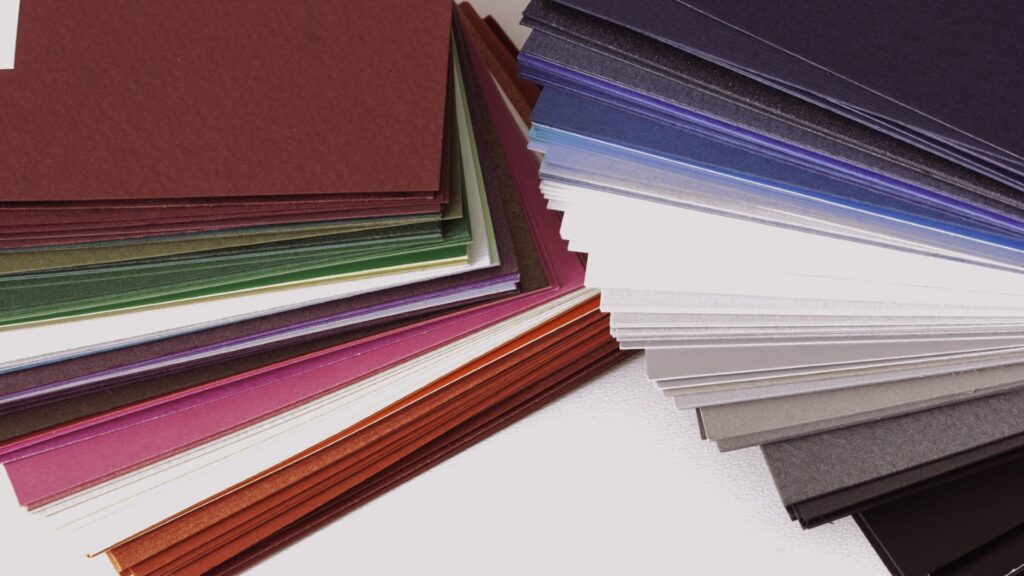GSM stands for grams per square meter, and PT stands for point. Both units measure the thickness of packaging materials, such as paper and cardboard. A common question from our customers is: “What’s the difference between the two systems?”
To clarify, we’re explaining what they are and the key differences.
Grams per Square Meter (GSM)
GSM stands for “grams per square meter.” This measurement tells us how much a square meter of paper weighs in grams.
In the world of printing and packaging, GSM serves as a key indicator of paper thickness and, by extension, quality. Generally, the higher the GSM, the thicker and more durable the paper or cardboard.
This doesn’t mean heavier paper is always better—it’s about finding the right balance for the project’s needs, considering factors like durability and cost.
Consider both the quality and quantity needed and the impact on shipping or mailing costs.
Knowing the exact GSM, or at least a range, can simplify decision-making.
Popular Weights
- 35 to 55 GSM: This range includes the very thin paper used for newspapers.
- 90 to 100 GSM: Typical for standard printer paper found in homes and offices.
- 120 to 140 GSM: Sturdier paper suitable for posters and bulletins.
- 210 to 300 GSM: Thick paper used for booklet and magazine covers.
- 350 to 400 GSM: Very thick paper, often used for business cards and greeting cards. Also called cardstock or coverstock.
Point System (PT)
It focuses on the caliper or thickness of the paper, measured using a micrometer. A “point” is equivalent to one-thousandth of an inch (0.001 inch).
A paper with a 10-point thickness would be 0.01 inches thick. This measurement is key for printers and manufacturers in determining the suitability of paper for various printing jobs and for calculating shipping weights.
Like GSM, a higher point value indicates thicker and usually more durable paper.
GSM vs. PT
While both GSM and PT measure aspects of paper thickness, GSM incorporates the weight of the paper in its calculation, offering a sense of how dense and heavy the paper is per unit of area.
PT, on the other hand, provides a direct measurement of paper thickness. For those working in packaging and printing, understanding both measurements can be key to selecting the right material for a project.
overview suitable for selecting the right paper or card stock for different projects.
Please note that the PT (point) equivalents are not specified in the sources, indicating the focus was primarily on GSM as a measurement of paper weight. The GSM scale effectively gives an idea of the thickness and, by extension, the potential use of the paper or card stock. Higher GSM values correlate with thicker, more durable materials suitable for more substantial applications like business cards, greeting cards, and covers.
For specific projects, such as invitations and greeting cards, the choice between lighter and heavier cardstock depends on the desired durability and elegance, as well as the capabilities of the printing equipment being used. For instance, most consumer-grade printers can handle paper weights from 80 lb to 100 lb (approximately 216 to 270 GSM), with heavier papers being more suitable for professional or formal invitations.
Choosing the Right Packaging Material
Deciding on the right packaging material involves more than just looking at GSM or PT values. Factors such as the material’s volume, density, and even surface texture can affect its suitability for a particular use. For example, some materials may offer a smoother surface for printing, while others might provide a unique texture but could be more challenging to print on.
Selecting the proper packaging is vital not just for the protection of products but also for presenting them in an appealing way to consumers. The right choice can enhance the product’s value, offering a unique unboxing experience that aligns with the brand’s image.


